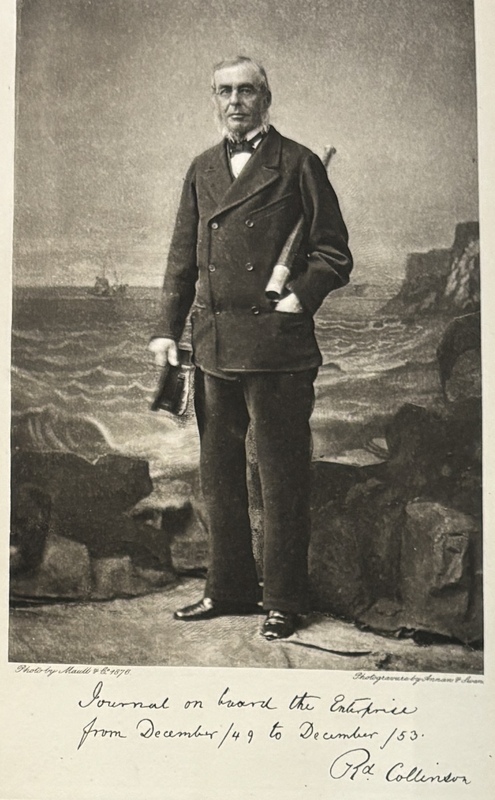Collinson Official Account vs. Charter's Diary
The physical diary of John Charters as presented in this virtual exhibit does not actually follow the expedition as reported by Collinson. Instead this diary is of a previous expedition in 1848-49 under Captain James Clark Ross. The Ross expedition was also in pursuit of the lost expedition of Sir John Franklin, and thus we assumed that many of the experiences cataloged in Charter’s journal reflect the daily life of a seaman on board the Collinson mission.
Charters account of the expedition includes a variety of tasks, events and encounters in the Arctic from 1848-49. He tells stories of scurvy, disease, death of crewmembers, dangerous ice and men overboard. He describes meeting and inviting Inuit peoples onboard and sharing a meal, and “dancing until two next Morning.” He also writes about viewing a strange phenomenon in the night sky, which presumably were the Northern Lights.
Major themes of the diary are the repetition of the crew’s practice of divine service, which is assumed to be performed daily before supper. As the diary progresses, Charter’s entries become shorter and shorter, with many of them simply recording the temperature of that day and “Do=Do=Do” which is likely shorthand for his daily chores onboard the ship. He writes about coming across polar bears, seals, and other wildlife, usually not with much excitement and keeps it brief. Charters also writes about the losses of some crew members, and consequently their burials, but he never goes into much detail or emotion.
While Dartmouth does not have a firsthand account of the Collinson expedition, there is little reference to the activities and emotions of the crew. Instead, when Collinson notes on the adversity and struggles of the voyage, he attempts to make the journey appear more intruiging and appealing to those who might be reading his account. For instance, Collinson writes, “on the return journey, the bitter cold and gloom of adversity had disappeared, but the sunshine of prosperity proved almost more difficult to bear.” This clearly is aimed at a higher educated reader, and is contrasted with Charters simple and plain descriptions.

